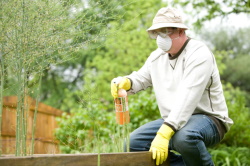Burn injuries can be among the most excruciating and distressing experiences one can sustain. Whether it's a minor kitchen area mishap or a severe burn from a mishap, comprehending the stages of burn wound healing is crucial for efficient treatment and recuperation. In this write-up, we will certainly dig deep into the complexities of shed injuries, their classification, Wollongong First Aid Course Near Me healing procedures, and important care techniques.
Understanding Burn Wound Recovery Stages: Recuperation Insights
Burns are classified into different degrees based on their intensity, each requiring particular clinical interest and treatment. The recovery process includes distinctive phases that must be acknowledged to make certain Wollongong CPR training courses correct monitoring and rehab.
What Are the Different Sorts Of Burns?
Burns are generally categorized right into 3 main types:
First-Degree Burns: These influence just the external layer of skin (skin). Symptoms consist of redness, light swelling, and pain.
Second-Degree Burns: These extend right into much deeper layers of skin (dermis), creating sores, extreme discomfort, and swelling.
Third-Degree Burns: These entail all layers of skin and may damage underlying cells. They appear white or charred and can be painless as a result of nerve damage.
Each kind necessitates varying degrees of clinical intervention and home treatment strategies.
The Healing Process: An Overview
1. Hemostasis Phase
Immediately after a shed injury happens, the body starts the hemostasis stage to quit any kind of bleeding. Capillary tighten to lower blood flow to the affected location while platelets aggregate to develop a clot.
2. Inflammatory Phase
This phase follows hemostasis and normally lasts for 3-5 days post-injury. It entails:
- Increased blood flow to deliver immune cells. Swelling as liquids accumulate in the tissue. Pain as nerve ends come to be sensitized.
3. Proliferative Phase
Taking area from about day 3 to week 3 post-burn, this phase includes:
- Formation of brand-new tissue with collagen deposition. Re-epithelialization where new skin cells migrate throughout the wound bed. Angiogenesis-- the development of new blood vessels-- to provide nutrients to healing tissues.
4. Renovation Phase
This last stage can last numerous months to years after a melt injury and is marked by:
- Maturation of collagen fibers. Decreased vascularity as frameworks mature. Potential for mark formation depending upon severity.
Importance of Specialized Burn Dressings: Crucial Burn Supplies for Home Care
Proper clothing is critical in taking care of burn wounds successfully in the house. Specialized shed dressings serve multiple objectives:
- They shield against infections by developing an obstacle versus pathogens. They keep dampness while allowing gases exchange which is important for healing. Some dressings contain antimicrobial homes that stop infection.
It's crucial to choose ideal dressings based on melt degree and dimension. For instance, hydrogel dressings are commonly advised for second-degree burns due to their cooling effect.
Scar Administration: Recovering After Significant Burns
Once a burn has healed, mark monitoring comes to be necessary for bring back function and appearance:
Silicone Gel Sheets: Using these helps squash raised marks over time. Massage Treatment: Encouraging blood circulation can enhance elasticity in mark tissue. Laser Therapies: Medical professionals may suggest these for much more extreme scarring cases.Common Misunderstandings Regarding Burn Treatment
CPR Constantly Reboots Heart Myth: Debunking Common Burn Treatment Misconceptions
One widespread myth bordering CPR is that it always restarts the heart; nonetheless, this isn't real-- mouth-to-mouth resuscitation increases opportunities of survival however does not guarantee heart task returns to instantly after cardiac arrest. Comprehending such false impressions can aid in providing accurate emergency treatment throughout emergencies entailing burns or various other serious injuries.

FAQs about Burn Injury Healing
1. What should I do promptly after sustaining a burn?
Answer: Awesome the area under running water for at least 20 minutes and cover it with a clean cloth or specialized dressing if necessary.
2. For how long does it take for burns to heal?
Answer: Recovering times vary by shed level; first-degree burns typically heal within a week while second-degree burns can occupy to three weeks or more depending upon severity.
3. When should I seek medical interest for a burn?
Answer: Look for professional help if you have second-degree burns bigger than three inches or any type of third-degree burns, despite size.
4. Can I use ice directly on a burn?
Answer: No, applying ice straight can create more skin damage; use cool (not cold) running water instead.
5. Exists any kind of reliable natural remedy for burns?
Answer: Aloe vera gel has soothing buildings that may help with minor burns yet consult healthcare providers pertaining to substantial injuries.

6. Exactly how do I understand if my shed is infected?
Answer: Signs include enhanced inflammation, swelling, pus discharge, fever, or getting worse pain; seek instant clinical suggestions if you think infection.
Conclusion
Understanding burn wound healing phases is important not simply for patients yet additionally caregivers that give support throughout recuperation stages. Understanding concerning specialized therapies-- like specialized dressings-- and proactive scar management dramatically impacts long-term results after major burns occur.
Through understanding projects that highlight safety and security around common risks like campfires or cooking area tools-- such as crinkling irons-- we can protect against several events before they happen! By recognizing just how to respond with effective first aid skills (like those instructed in HLTAID012 programs), you equip yourself with important devices that shield lives throughout emergency situations entailing burns or various other severe injuries.
In summary, knowledge really is power when taking care of possible emergencies connected to burns-- from recognizing treatment methods like chemical or electrical burns emergency treatment standards down with different child-centric complications seen within education settings-- every information matters in ensuring safety!
This detailed guide aims not just to inform however also influence self-confidence in taking care of complex circumstances successfully-- after all-- avoidance incorporated with timely intervention saves lives!